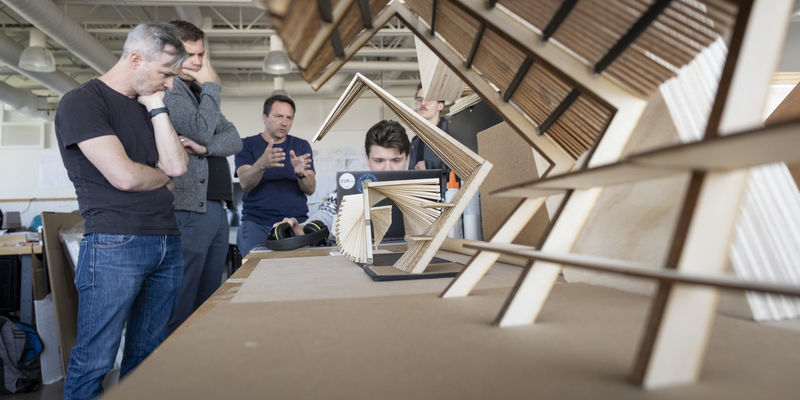Two Tyler programs are bringing the artist’s eye to STEM fields
Tyler’s design and illustration and metals/jewelry/CAD-CAM programs have long incorporated science and technology in their curriculums, and they regularly prepare their students for STEM careers.

Students from around the world come to the Tyler School of Art and Architecture for its metals/jewelry/CAD-CAM (MJCC) and design and illustration (D&I) programs. These areas of study incorporate the use of science and technology into their curriculums, leading to partnerships with the College of Engineering and the Kornberg School of Dentistry. Their graduates land design jobs at companies like Tiffany & Co., Puma, Vanguard and in the design industry.
The MJCC program was started in 1962, and from its inception its faculty have always placed an emphasis on science, technology and research. That emphasis ramped up in 1989, the first year that computer-aided design (CAD) and computer-aided manufacturing (CAM) courses were introduced to the curriculum. The balance of analog and digital studio work became a core tenet of the program, and its influence was felt beyond just Tyler, by the jewelry industry as a whole.
“The reason CAD exists in the field of jewelry is because of Tyler,” said Doug Bucci, who took over as head of the MJCC program in 2018. “We were the first program in the world to teach computer-aided design and computer-aided manufacturing in the jewelry industry. Those CAD and CAM components are now paramount to our identity.”
The kinds of computer-aided work MJCC students undertake includes 3D renderings, physics animation, coding and 3D printing. Those skills have helped graduates land jobs with jewelry brands like Tiffany & Co. and David Yurman. MJCC alumni have also gone into industrial design and product design roles with brands like Puma and Crayola.
Others have brought their talents to the medical field. Erin Lees, TYL ’23, works as junior digital dentistry technician and anaplastologist at Colombia University, where she designs and fabricates prosthetics for the ears, eyes and other parts of the face.
Then there’s Ellen Sisti, TYL ’21, who worked alongside Bucci to help establish a first-of-its-kind digital dental lab at the Kornberg School of Dentistry. She was recognized as a 2023 Temple University 30 Under 30 recipient for that work. Today, she uses CAD to build custom furniture at Loubier Design, a Philadelphia-based design, build and millwork studio.
The D&I program also regularly lands its graduates in STEM careers. Students in the program work with apps, websites and kiosk interfaces, augmented and virtual reality, and even game design. The gaming industry has become a popular landing spot for D&I alumni. Many others have gone onto careers in design, like Nick Olshefski, TYL ’19, who works as a senior user experience designer at Vanguard.
“We’re really grounded in technology. In graphic design, we haven’t worked without computers since the 80s,” said Kelly Holohan, head of the D&I program.
It may seem challenging to prepare students for technology-dominated fields, given how quickly advancements are made. But Holohan says her program addresses this through a conceptual approach that teaches students the foundations of graphic and interactive design.
“We’re very much a conceptually driven program that’s grounded in human-centered research and design solutions,” she said.
For Neha Agarwal, a 2006 graduate of the program, the concepts she learned in the program have guided her throughout her career and the evolution of design technology that she experienced firsthand.
“I graduated from Tyler’s MFA program the year before the first iPhone debuted, right when our relationship with digital technology started to shift rapidly,” said Agarwal, who now works as a design manager at Think Company. “No one knew what was ahead, but Tyler taught me foundations I still lean on in my design career.”
The commitment to STEM education allows these programs to be classified as STEM programs under guidelines from the Department of Education and the Department of Homeland Security. Holohan and Bucci believe the classification acknowledges the STEM competencies that were historically represented in their programs’ curriculums.
They also recognized the global appeal that their programs have, as both programs regularly attract international students who are seeking an art education at the forefront of science and technology. The STEM designation allows international graduates to extend their visas and remain in the country for two additional years through optional practical training, which is employment in a field related to the graduate’s area of study.
“Many of our international graduates wish to stay in the country,” said Holohan. “This classification greatly benefits them and also the companies they join, as they are highly talented and bring exceptional skills, creativity and a global perspective that can drive innovation and success.”


